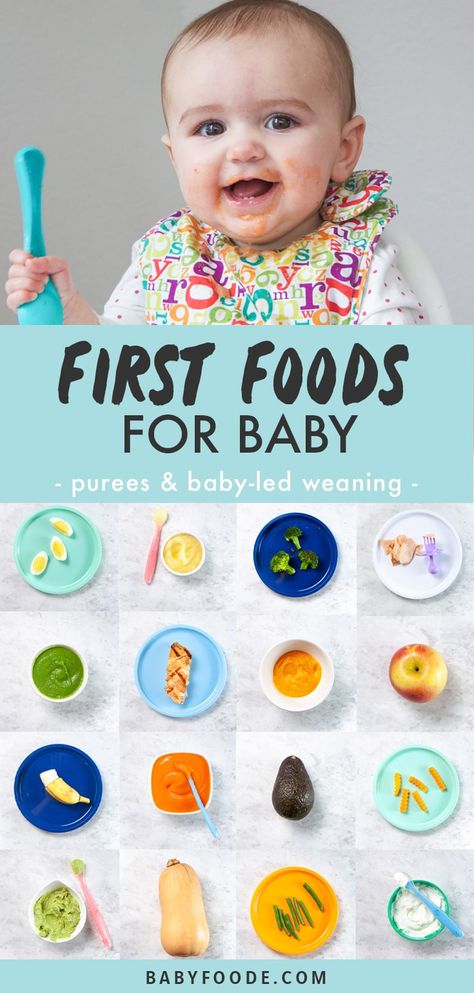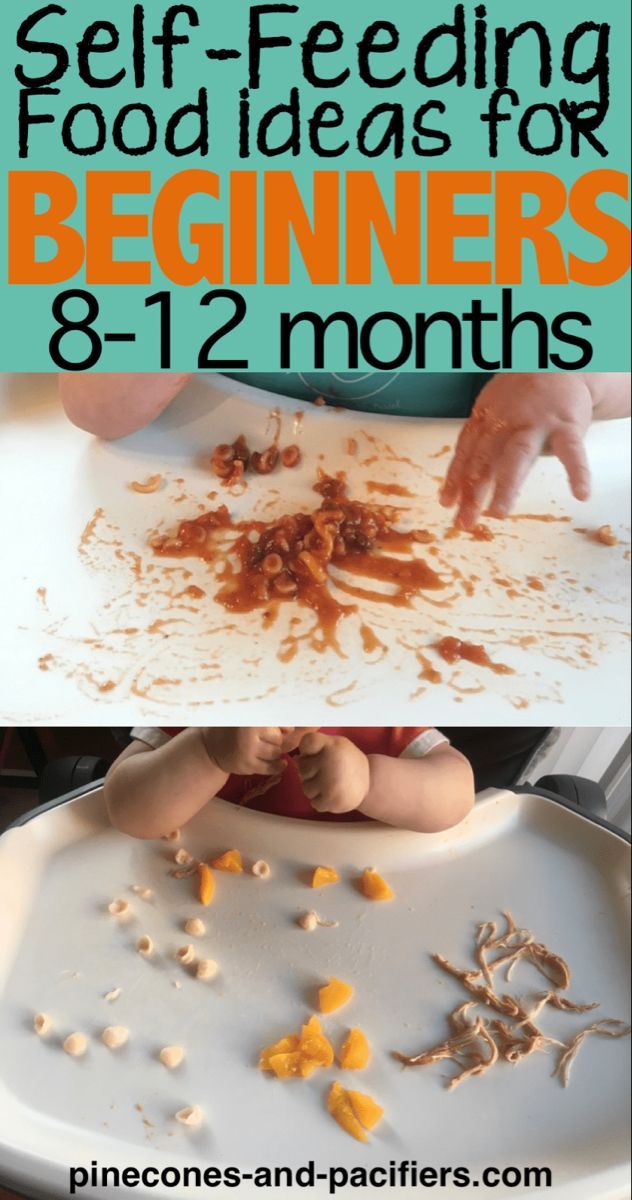6 month baby food youtube
6 month baby food | six month baby food
Search
Home baby food 6 month baby food | six month baby food | baby food...
This post is also available in हिन्दी (Hindi)
6 month baby food | six month baby food | baby food recipes 6 months with detailed photo and video recipes. congrats! if you are looking at this post, it means your baby has turned 6 months and ready for solid foods. this post has 2 recipes for 6 month or more old babies who are ready to consume solid food. basically, the first recipe is boiled mix veggies puree and the other is a combination of mashed rice and moong dal lentil.
1 Watch Video
2 Recipe Card
3 Ingredients
4 Step By Step Photos
5 Mix Veg Puree Recipe
6 Dal Khichdi Recipe
7 Notes
6 month baby food | six month baby food | baby food recipes 6 months with step by step photo and video recipe. i guess, with babies each and every stage is very crucial and the exciting news for all mums is the 6 months stage. this is the stage where most of the babies are ready for solid foods as their tastes start developing.
i have been receiving a lot of recipe request for baby foods food especially for 6 months or above. i totally understand the concern but i was very cautious and i wanted to be very thorough with the recipe. six month baby food can be crucial for many babies and also for mums hence i made sure to check with my friends and family who had a very recent experience with it. in this post, i have shared 2 basic 6 month baby food which can be served to most of the babies. certainly, each region can have their own version or native baby food recipes for 6 months, but these recipes should be good, to begin with. the main reason to handpick these 2 recipes are due to the fact that they are equally balanced with protein and carbs making it perfect for 6 month or above kids.
further, i would like to add few tips, recommendations and ideas for 6 month baby food recipes. firstly, i have specifically added cumin powder in the place of cumin seeds in the mashed moong dal khichdi. adding whole cumin seeds can create choking and hence surely avoid. secondly, it is not necessary that once your babies have turned 6 months, you can start weaning. ensure to check with your local gp/doctor who should be able to asses the physical developmental milestones of the baby. lastly, the best practice is to have customized 6 month baby food chart and increase the serve daily based on the response. my personal preference would be the vegetable puree compared to the dal khichdi but completely depends upon your kid’s preference.
finally, do visit my other kids recipes collection with this post of 6 month baby food recipes. it mainly includes for kids but not necessarily for 6 month babies like dal khichdi, palak khichdi, tri colour sandwich, dahi sandwich, fruit salad, masala peanuts, kachumber salad, potato fingers and chocolate ice cream. further, i also request you to check my other popular recipes collection like,
further, i also request you to check my other popular recipes collection like,
- snacks recipes collection
- dal recipes collection
- rice recipes collection
6 month baby food video recipe:
Must Read:
recipe card for 6 month baby food or six month baby food:
6 month baby food | six month baby food | baby food recipes 6 months
HEBBARS KITCHEN
easy 6 month baby food | six month baby food | baby food recipes 6 months
5 from 216 votes
Prep Time 5 mins
Cook Time 20 mins
Total Time 25 mins
Course baby food
Cuisine Indian
Servings 2 Servings
for mix veg puree:
- ▢ ½ cup beans (chopped)
- ▢ ½ cup carrot (chopped)
- ▢ 1 clove garlic
- ▢ ½ cup peas / matar (fresh / frozen)
- ▢ pinch salt (optional)
- ▢ 1 cup water
for dal khichdi:
- ▢ ¼ cup rice (soaked 15 minutes)
- ▢ 2 tbsp moong dal (washed)
- ▢ 2 tbsp carrot (chopped)
- ▢ pinch cumin powder / jeera powder
- ▢ pinch turmeric
- ▢ pinch salt (optional)
- ▢ ¼ tsp ghee / clarified butter
- ▢ 2 cup water
mix veg puree recipe:
firstly, in a cooker take ½ cup beans, ½ cup carrot, ½ cup peas and 1 clove garlic.

also, add pinch salt and 1 cup water.
pressure cook for 3 whistles or till vegetables get cooked well.
once the pressure settles down, open the cooker and transfer to a blender.
blend to smooth puree adding water if required.
finally, serve mix vegetable puree for baby 6 months and above.
dal khichdi recipe:
firstly, in a pressure cooker take ¼ cup rice and 2 tbsp moong dal.
also, add pinch cumin powder, pinch turmeric, pinch salt.
additionally, add ¼ tsp ghee and 2 cup water
pressure cook for 6 whistles or till khichdi gets cooked well.
once the pressure settles down, open the cooker and mash smooth.
alternatively, blend to smooth puree adding water if required.
finally, serve dal khichdi for baby 6 months and above topped with some ghee.
Tried this recipe?Click here to subscribe our Youtube Channel and stay updated with our latest video recipes
Subscribe to our Youtube ChannelClick here to subscribe our Youtube Channel and stay updated with our latest video recipes
how to make baby food recipes 6 months with step by step photo:
mix veg puree recipe:
- firstly, in a cooker take ½ cup beans, ½ cup carrot, ½ cup peas and 1 clove garlic.

- also, add pinch salt and 1 cup water.
- pressure cook for 3 whistles or till vegetables get cooked well.
- once the pressure settles down, open the cooker and transfer to a blender.
- blend to smooth puree adding water if required.
- finally, serve mix vegetable puree for baby 6 months and above.
dal khichdi recipe:
- firstly, in a pressure cooker take ¼ cup rice and 2 tbsp moong dal.
- also, add pinch cumin powder, pinch turmeric, pinch salt.
- additionally, add ¼ tsp ghee and 2 cup water.
- pressure cook for 6 whistles or till khichdi gets cooked well.
- once the pressure settles down, open the cooker and mash smooth.
- alternatively, blend to smooth puree adding water if required.
- finally, serve dal khichdi for baby 6 months and above topped with some ghee.
notes:
- firstly, add vegetables like sweet potato, pumpkin to make more nutritious.

- also, use a pressure cooker as it cooks uniformly and retains nutrition.
- furthermore, adding salt is completely optional. recommend not to add salt till your baby turns 1 year.
- additionally, mix breast milk or formula just before serving.
- finally, baby food for a 6-month baby should be served at slightly warm and not hot.
This post is also available in हिन्दी (Hindi)
OUR OTHER LANGUAGES
BROWSE BY CATEGORIES
BROWSE BY CATEGORIESSelect Categoryappetizerbaby foodbakery recipesbeverages recipesbiryanibreakfast recipescelebrations, rituals & traditionschaat recipeschutney recipescookies or biscuits recipescooking tips, tricks, methodscurry recipesdal recipesdessertdiabeticdinner recipesdiwali snacksdiwali sweetsdosa recipeseggless cakes recipesFeaturedgluten freeidli recipesindian street foodindo chineseinstant recipesinternational recipesjunkfoodlow carbslow fatlunch ideas or thali recipeslunch recipesmasala recipesno onion no garlicpaneer recipesparatha recipespickle recipesproduct reviewpulao recipesraita recipesrasam recipesrecipes collectionrice recipesroti recipessalad recipessambar recipessandwich recipessauce and dipsside dishsnacks recipessoup recipesstarters or entreesweets recipestambli recipesUncategorizedveganvrat recipesSUBSCRIBE TO OUR RECIPES
Homemade Baby food Recipes - Easy Indian Baby Food Collection
You are here: Home / Baby food recipes / Homemade Baby food Recipes - Easy Indian Baby Food Collection
last updated: by Kalyani
Here is the homemade Indian Baby food Recipes collection, which is ideal for babies aged 6 to 12 months, including simple purees, combination purees, porridge, health mix powders, snacks, soups, beverages, rice dishes, and many more. All these recipes are homemade, nutritious, fresh, delicious, and easy to prepare at home. This baby food recipe collection helps you to feed your baby with wholesome goodness.
All these recipes are homemade, nutritious, fresh, delicious, and easy to prepare at home. This baby food recipe collection helps you to feed your baby with wholesome goodness.
Bookmark this page for future reference, as I will update this post whenever I add baby food recipes to my blog. Click on each thumbnail image or the hyperlink below the recipes' photos. Please refer to the notes section at the post's end for the key points to remember when making homemade baby food. Check the complete collection of baby food recipes here.
I will update this post with recipes regularly. Please be updated by liking my facebook page GKFoodDiary, or following me through Google+,Twitter & Pintrest
Jump to:- Purees
- Porridge
- Health Mix Powder | Homemade cerelac
- Mashed Food
- Rice
- Breakfast/Dinner (Wholesome Food After 8+Months)
- Snacks
- Soup
- Beverages (Juices & Smoothies)
- Desserts
- Essentials
- Homemade Baby food Recipes - Easy Indian Baby Food Collection
Purees
- Banana Puree Recipe (6 M+)
- Apple Sweet Potato Puree (6 M+)
- Sweet Potato Puree (6 M+)
- Carrot Potato Puree (8 M+)
- Pumpkin Puree (6 M+)
- Carrot Beetroot Potato Puree (8 M+)
- Carrot Puree (6 M+)
- Apple Puree (6 M+)
- Mango Puree (8 M+)
- Broccoli potato puree (8 M+)
- Papaya Puree (6 M+)
- Plums Banana Puree (6 M+)
- Prunes Puree (6 M+)
- Kiwi Puree (8 M+)
- Pear Puree (6 M+)
- Muskmelon Puree (6 M+)
- Apple Banana Puree (6 M+)
- Apple Pears Puree (6 M+)
- Avocado Puree (6 M+)
Porridge
- Barley Porridge (6 M+)
- Green Gram Porridge (8 M+)
- Broken wheat Milk Porridge (6 M+)
- Apple Rice Porridge (6 M+)
- Instant Phool Makhana Porridge (6 M+)
- Quinoa Porridge (6 M+)
- Rajgira Porridge (6 M+)
- Carrot Porridge (8 M+)
- Sooji Porridge (6 M+)
- Sabudana Porridge (6 M+)
- Instant Sooji Porridge (6 M+)
- Instant Dalia khichdi Porridge (8 M+)
- Rice Porridge (12 M+)
- Ragi Urad Dal Porridge (8 M+)
- Puffed Rice Porridge (8 M+)
- Oats porridge (8 M+)
- Rice porridge (6 M+)
- Rice Porridge with Moong Dal (6 M+)
- Ragi Porridge (6 M+)
- Broken Wheat Porridge (8 M+)
- Wheat Porridge (8 M+)
- Oats Banana Porridge (8 M+)
- Urad Dhal Porridge (8 M+)
- Ragi Porridge (6 M+)
- Homemade Cerelac/ Sathu Maavu porridge (8 M+)
Health Mix Powder | Homemade cerelac
Cerelac/Sathu Maavu(8 M+)
Almond Powder(8 M+)
Barley Cereal Powder (6 M+)
Curry Leaves Powder( 1 Yr +)
Dry Fruits Powder (8 M+)
Dry Ginger Powder (8 M+)
Lentils Powder (1 Yr+)
Poha Cereal Powder (7 M+)
Puffed Rice Cereal (7 M+)
Ragi Green gram (7 M+)
Rice Moong Dal (6 M+)
Rice Powder (6 M+)
Sprouted Ragi Powder(6 M+)
Urad Dal Powder (8 M+)
Wheat mix Powder (8 M+)
Nuts Powder
Raw Banana (7 M+)
Makhana Powder (6 M+)
Sprouted Ragi Powder(6 M+)
Ragi Malt Powder (1 Y+)
Oats Powder (8 M+)
Dalia Khichdi powder(8 M+)
Sesame Seed (1 Yr+)
Chocolate Powder (1 Yr+)
Mashed Food
Rice
Breakfast/Dinner (Wholesome Food After 8+Months)
Snacks
Soup
Beverages (Juices & Smoothies)
Desserts
Essentials
Notes :
- Sterilize the bowls and spoons used to feed your baby in a vessel with hot water for five minutes and immerse it in the same container until use.

- Never introduce more than 1 food at a time when introducing solids to your baby. Follow 3 days wait for rule(3 days wait for the rule is a simple way to check possible allergic reactions, including skin rashes, tummy troubles like gas or diarrhea or vomiting, and poop troubles to new foods offered to your baby. Introduce new food at a space of 3 days apart).
- Check for allergy symptoms when introducing new food to your baby, and stop feeding you if you find any symptoms.
- Any sweetener( if the recipe calls for it), like jaggery, Palm jaggery, etc., can be avoided for one year. Instead, sweet-tasting vegetables or fruits can be preferred.
- Always check with your pediatrician before introducing any new food.
- Steaming is a healthy option for baby food than pressure cooking. So I prefer steaming using an Idli pot or steamer.
- Skip cow's milk if your baby is under a year old, and use breastmilk or formula instead.
 Add breastmilk or formula to baby food once it's cooled down.
Add breastmilk or formula to baby food once it's cooled down.
Homemade Baby food Recipes - Easy Indian Baby Food Collection
5 from 3 votes
Homemade Baby food Recipes - a collection of Indian baby foods including purees, porridge, rice dishes etc.
Course Baby Food
Cuisine Indian
Prep Time 5 minutes
Cook Time 10 minutes
Total Time 15 minutes
Calories
Author Kalyani
Serving: 1g
Tried this recipe?Mention @gkfooddiary or tag #gkfooddiary!
You may also like:More Baby food recipes
Food Advertisements by
Reader Interactions
Union of Pediatricians of Russia
Nutrition for children from 1 to 3 years of age
The period from 1 to 3 years of life is a crucial stage in the transition to an adult type of nutrition, which has certain features.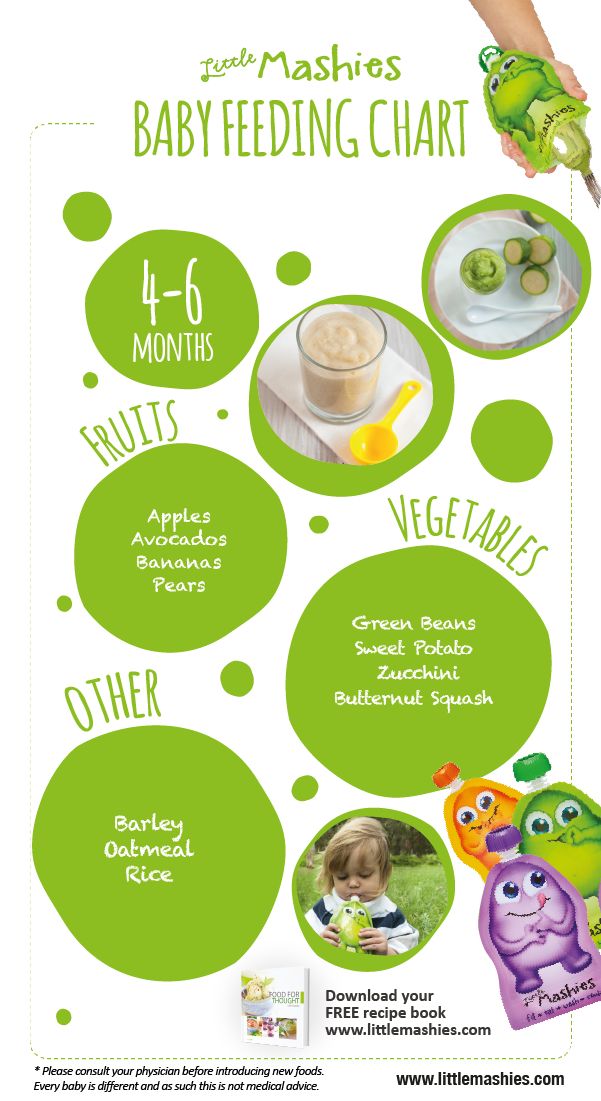 In order to ensure that all the necessary nutrients enter the child's body and at the same time prevent an excess of individual nutrients, nutrition should be balanced and varied.
In order to ensure that all the necessary nutrients enter the child's body and at the same time prevent an excess of individual nutrients, nutrition should be balanced and varied.
The daily amount of food for children aged 1 to 1.5 years should be 1000-1200 g, from 1.5 to 3 years - 1200-1500 g, the amount of food in one feeding should not exceed 300-350 ml. The diet consists of three main meals per day and two snacks. It is considered optimal when breakfast is 25% of the total energy density of the diet, lunch is 30–35%, dinner is 20%, and additional meals are about 10%. In general, the child can eat the same food as the rest of the family.
In the diet of a child of 1–3 years of age , must be present daily: meat of animals or poultry, dairy and sour-milk products, vegetables, fruits, bread, cereals, vegetable and butter; fish and eggs are included in the diet 2-3 times a week.
Cereal products: bread - 2-3 servings per day, cereals and side dishes - 1 time per day
Fruit and/or vegetables: at least 5 times a day
Dairy products: at least 3 servings per day (including those used to make cereals, yoghurts, fermented milk drinks, cottage cheese, infant formula or breast milk).
Domestic pediatricians recommend, when compiling a diet for children aged 1–3 years, preference should be given to specialized children's dairy products of industrial production that meet high quality requirements and safety indicators for this age. Most children's dairy products are additionally enriched with vitamins and/or minerals and other biologically active components, taking into account the physiological needs of children of this age. At the same time, in foreign recommendations, children over 1 year old are offered the gradual introduction of whole cow's milk, which is rich in fats necessary for proper growth and development, the absorption of vitamins A and D, the development of the brain and nervous system of the child.
Meat dishes: 2-3 times a day
Fish dishes: 2-3 servings per week
Eggs: 2-3 per week
Dietary fats: 3-4 teaspoons of butter and/or vegetable oils per day
When cooking, use the minimum amount of salt and sugar, and do not add them to industrial products.
Offer your child a variety of foods and let them choose for themselves. Children love to eat on their own, so if possible, offer food that the child can eat with their hands.
It is important to remember that a baby can choke on pieces of food, so whatever you give your baby should be crushed or cut into small pieces that can be easily chewed.
Do not give to a small child: nuts, whole grapes, cherry tomatoes (unless quartered), whole carrots, seeds (such as pumpkin or sunflower seeds), round candies, legumes, raisins, because a child can eat them choke.
Also in the diet of children of the first 3 years of life should not be present:
Mushrooms; canned snacks, pickled vegetables and fruits
Home canned food
Dry concentrates for side dishes
Hot sauces, mustard, horseradish, pepper, vinegar, mayonnaise
Natural coffee
Juices and drinks in the form of dry concentrates; sweet carbonated drinks
Products containing food additives (flavorings, dyes of artificial origin, including chewing gum), popcorn
Combined fats; cakes and pastries
It is important to remember that children of this age should not be given too spicy and spicy foods.
Putting the child to sleep: useful tips and recommendations
Author, editor and medical expert - Muraeva Yulia Yurievna.
Number of views: 207 562
Date last updated:0002
Contents:
Baby sleep rhythms
How to put your baby to sleep
How to help your baby fall asleep
How to get your baby to sleep in his own crib?
Bedtime rituals
What are the bedtime rituals?
Sleep is an important part of life, so it must be regular and of high quality 1 . But often the first year of a child's life becomes a real test for parents. Even such a seemingly simple action as putting a newborn to sleep sometimes turns into a task of increased complexity.
The difficulty lies in the fact that sleep is still being formed in infants, and daily rhythms differ from those to which parents are accustomed 2 .
Rhythms of baby sleep
Before birth, the alternation of sleep phases in the fetus is subject to circadian (daily) rhythms and fluctuations in the hormonal background of the expectant mother. After childbirth, it takes time for the child to mature its own regulatory system 2 .
After childbirth, it takes time for the child to mature its own regulatory system 2 .
A term newborn sleeps an average of 16-17 hours 2 , and the total duration of sleep is not affected by the dark and daylight hours 3 .
In infants up to 2 months there are 2 phases of sleep 2.3 :
- Active sleep. Starts after falling asleep. This phase is important for the stimulation and development of the central nervous system. During active sleep, you can observe the baby's mobility, rapid eye movements and a weakening of reactions to external stimuli (light, sound, touch).
- Peaceful sleep. Follows the active phase. During restful sleep, the heart rate slows down, the movements of the eyeballs stop, and the baby stops moving his arms and legs.
Together these 2 phases form a cycle. Each cycle begins with active sleep followed by restful sleep. The duration of such a cycle is approximately 45-60 minutes 3 .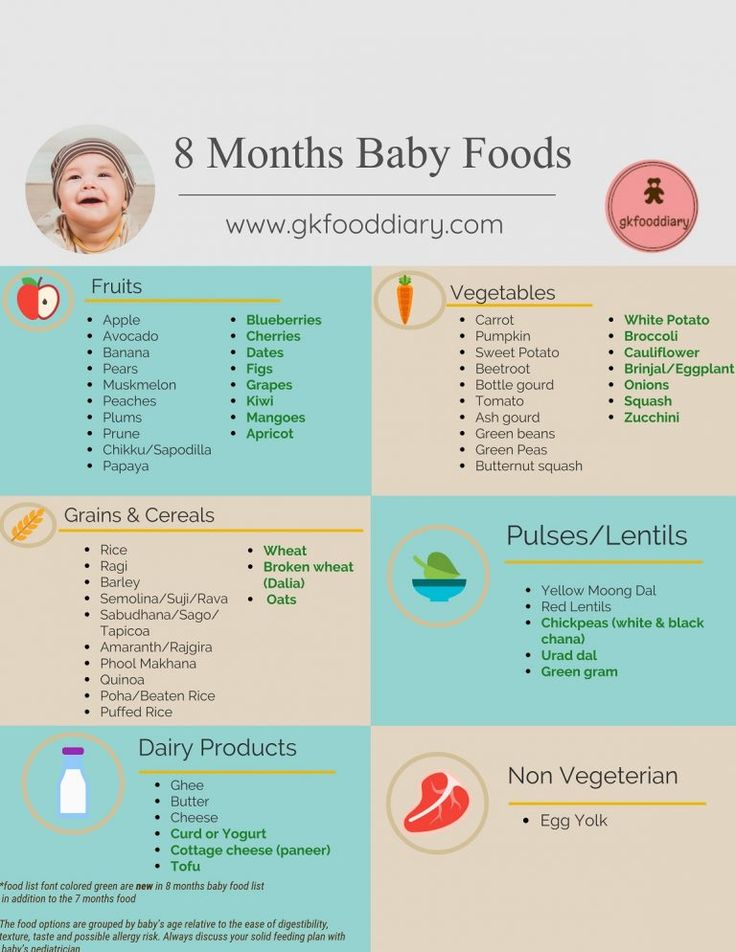
But the sleep-wake cycle lasts longer. For breastfed babies, it is approximately 1-3 hours, and for "artificial" children, it is 2-5 hours 3 .
Gradually, periods of wakefulness lengthen, and most of the sleep occurs at night 2 :
- By the end of 3 months of life, an uninterrupted night's sleep can be about 5 hours 3 .
- From 2 to 12 months, babies sleep 9-10 hours a night 3 , while daytime sleep is divided into 1-4 episodes that can last from 30 minutes to 2 hours 3 .
Sleep regularity and sleep disturbances can be assessed after 6 months when the baby develops circadian rhythms 3 .
Although the night sleep becomes longer, each cycle is still accompanied by micro-awakenings (wakings) 2.3 , after which the baby can fall asleep quickly enough. This is a short-term activation of the central nervous system, which must be distinguished from a full awakening 2 . It is good if at this moment the mother is nearby and helps the child fall asleep again.
It is good if at this moment the mother is nearby and helps the child fall asleep again.
Back to Contents
How to Put Your Baby to Sleep
The American Pediatrics Association has developed guidelines for safe sleep for babies. Below are some of them (the full list of recommendations can be found at the link) 4 :
- The best sleeping position is on your back.
- The mattress should be hard enough, and the crib should not be cluttered with things, blankets, pillows.
- No smoking in the nursery.
- If the child sleeps in a cool room, it is better to dress him warmly or put him in a special sleeping bag for babies. He should be warm, but not hot, so it is not recommended to wrap him with a blanket. And in order for the baby to breathe freely, in no case cover him with a blanket with his head.
Babies up to 12 months still need night feeds, so sleeping in the same room with the mother may be necessary to optimize breastfeeding and closer contact 4 . Co-sleeping in the same room with parents does not mean that the child will sleep with them in the same bed, because it does not meet the safety requirements 4 .
Co-sleeping in the same room with parents does not mean that the child will sleep with them in the same bed, because it does not meet the safety requirements 4 .
Before putting your newborn to bed, also remember that:0092 4 . There are babies who find this soothing, but swaddling can interfere with the baby's breathing because the chest is compressed and the baby cannot take a deep breath 4 . Tight swaddling also increases the risk of a lung infection and can aggravate hip dysplasia. Do not swaddle a baby who is already rolling over from his back to his stomach 4 .
 Older babies do not need to be allowed to fall asleep while watching a movie, after the set time, or in their parent's bed 4 .
Older babies do not need to be allowed to fall asleep while watching a movie, after the set time, or in their parent's bed 4 . Back to content
How to help your baby fall asleep
As the baby develops, fears, anxiety, anxiety may appear when he refuses to sleep separately from his parents and resists falling asleep 2 . The maturation of biological rhythms is facilitated by the environment of the child, the behavior of parents, adherence to the regimen and rules of sleep hygiene 3 .
To ensure quality rest and proper development, parents need to follow the recommendations. Specialists advise following these rules 4 :
- Put the baby to bed in the evening and wake up in the morning at about the same time, despite weekends and holidays 4 .
- Avoid physical activity before bed 4 .
- Limit activities in bed that are not related to falling asleep (playing, feeding), as this interferes with the baby's understanding of sleep 4 .

- Keep the bedroom comfortable - moderate temperature, low lighting, minimal noise, comfortable pajamas 4 .
- Form a laying ritual 5 .
- Follow the diet - the baby should not be hungry or overeating. Before going to bed, you can feed him a little 5 .
- Keep an activity diary so that you can analyze and understand what interferes with your child's sleep 4 .
Back to Contents
How can I get my baby to sleep in his own crib?
There are various techniques to help a child fall asleep on their own, without the help of their parents. They are often used as a non-drug treatment for insomnia (sleep disorder) in young children aged 1 to 3 years 4 . Examples of such techniques are described below. Choosing the right one for your baby should be discussed with a baby sleep specialist.
One way to overcome sleep disorders is through behavioral therapy. It helps to change wrong associations and sleep patterns in a child 4.7 . In behavioral therapy, the abandonment method is used. With him, parents immediately leave the child in the crib and leave the nursery. However, they do not return when they hear his cries or call, giving him the opportunity to fall asleep on his own 4 . But psychologists do not recommend using this approach if the baby is not yet 6 months old and is breastfeeding 4 , as this may adversely affect the baby's condition.
It helps to change wrong associations and sleep patterns in a child 4.7 . In behavioral therapy, the abandonment method is used. With him, parents immediately leave the child in the crib and leave the nursery. However, they do not return when they hear his cries or call, giving him the opportunity to fall asleep on his own 4 . But psychologists do not recommend using this approach if the baby is not yet 6 months old and is breastfeeding 4 , as this may adversely affect the baby's condition.
In addition, the abandonment method is not suitable for all parents. For those wishing to be near or to calm a crying baby 4 experts recommend other methods - "check and hold" or "gradual repayment" 4.7 .
Back to Contents
"Checking and Holding"
When getting ready for bed, the parent spends some time with the child, then puts him to bed and leaves the room or goes to bed if she is in the nursery. At the same time, they do not approach the baby for 15-20 minutes and do not react to his crying or screaming.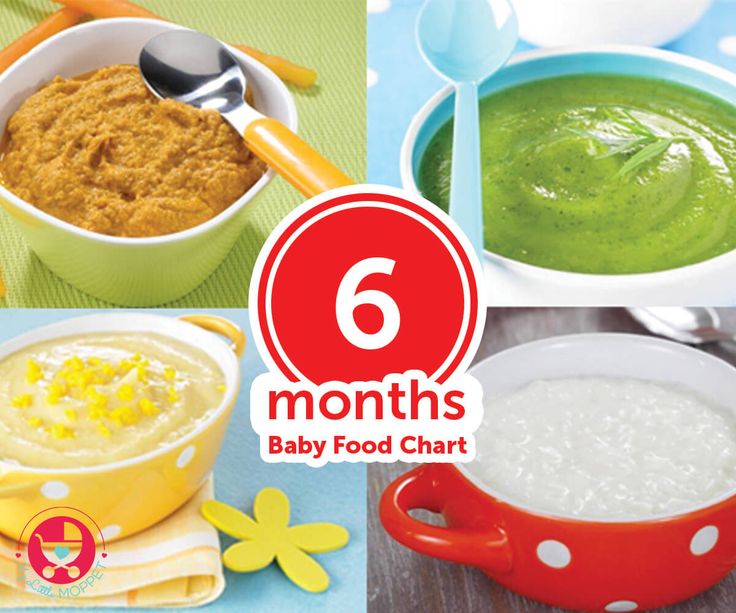 This period is called "hold" 7
This period is called "hold" 7
When the allotted 20 minutes are up, the parent goes to the child, straightens his bed and returns to himself. This part is called checking 7 .
It is very important not to take him out of the crib and feed him when he wakes up. The exception is children who require night feedings for age or medical reasons. In all other cases, the parent simply comes to the crib for a short time to check, and then leaves again for a 15-20 minute “hold” 7 .
Gradually - over several nights - increase the "hold" interval to 30 minutes 7 .
Up to content
Gradual repayment
This technique is designed to “repay” the child's protests and manipulations 7 . There are 2 options for "gradual repayment" - with and without the presence of a parent 4 .
The classic option is to leave the baby alone in the bedroom for a certain amount of time, gradually accustoming him to fall asleep on his own. Unlike the “check and hold” method, the child can be calmed down. But you need to return to his bed not at the first call, but after a certain time. After the child calms down, you need to leave again, increasing the intervals when he tries to fall asleep without you 7 . This option is suitable for babies over 6 months old 4 .
Unlike the “check and hold” method, the child can be calmed down. But you need to return to his bed not at the first call, but after a certain time. After the child calms down, you need to leave again, increasing the intervals when he tries to fall asleep without you 7 . This option is suitable for babies over 6 months old 4 .
Until the age of six months, use the “gradual repayment” method in the presence of a parent. It is carried out in stages 4 :
- The parent puts the baby to bed and sits next to it. If the bed is large, you can lie down next to the child.
- On subsequent nights, mom or dad still stays with the baby, but gradually reduces the amount of touching, communicates less with him, showing him that they are busy with something, for example, reading or cleaning the room.
- When putting the child to bed, the parent does not lie down next to him, but sits on a chair not far from the bed, about 5 meters from it, continuing to sit until the baby falls asleep.

- In the next step, the distance between the bed and the chair is increased by gradually moving it away.
- A little later, you can leave the nursery for a while, but be sure to return before the baby cries.
If the child wakes up, repeat the same steps as in this step of the procedure. The stages can be stretched over several days so that the baby has time to get used to each 4 .
Up to contents
Bedding rituals
Forming a bedding ritual is considered to be an effective method 4 . It can complement the "repayment" technique, but sometimes it works quite well on its own. Suitable for all ages, but the earlier it is started, the less likely babies are to develop sleep problems - they fall asleep faster and sleep longer 4 .
The ritual begins at the moment of the child's drowsiness. Before you put the baby to sleep, you need to perform a number of actions. They should be predictable, regular, relaxing and positive. The total duration of the ritual is 20-45 minutes 4 . If it was not possible to meet the set time, most likely, you need to shift the ritual to another time and wait for drowsiness. It can manifest itself as loss of interest in surrounding toys and people, reddening of the eyelids, rubbing of the eyes, yawning 4 .
The total duration of the ritual is 20-45 minutes 4 . If it was not possible to meet the set time, most likely, you need to shift the ritual to another time and wait for drowsiness. It can manifest itself as loss of interest in surrounding toys and people, reddening of the eyelids, rubbing of the eyes, yawning 4 .
Back to Contents
What are the rituals for falling asleep?
Experts recommend preparing for sleep, which consists of consecutive, daily repeated actions, the so-called routines 5 . They help speed up falling asleep, increase the quality and duration of sleep, reduce the number of night awakenings 5 .
The most typical nightly rituals 6 :
- Bathing in warm water with your favorite foam or bath product, light massage.
- Soothing sounds - "white noise". This is a monotonous noise that does not carry a semantic load, soothes and helps to forget, for example, flowing water, a metronome, ticking clocks or recordings of nature sounds.

- Lullabies and fairy tales.
- Wishes for "good night", "sweet dreams" or other phrases that are said only before going to bed.
Sleep experts recommend a three-step ritual that includes bathing, massage and quiet time in the crib 8 .
- Bath foam can be used during bathing. For babies from 6 months, JOHNSON’S ® Baby Bath Foam "Before Bed" is suitable. It has a soothing scent to help your baby get ready for bed 8 .
- Immediately after a warm bath, a milk can be applied to the skin, such as JOHNSON’S ® Bedtime Milk Milk 8 for children over 6 months of age, by lightly stroking the skin. Such a massage will calm the baby even more and prepare him for sleep, especially thanks to the pleasant smell of milk 8 .
- At the third stage, you need to change the child into pajamas, read a bedtime story or sing a lullaby 4,8 .
As a rule, a few days are enough to form an association between the evening routine and falling asleep 4 .
As you can see, pediatricians and psychologists have developed various methods for healthy children's sleep and fast falling asleep. But you need to use them, taking into account the age of the child, his habits and characteristics of the nervous system. The task of parents is to organize the baby’s daily routine and prepare him for sleep, calming and creating positive associations with the process of falling asleep. With the correct implementation of the recommendations of a specialist, the child will gradually learn to fall asleep independently and faster, will sleep longer and sounder.
You may also be interested in:
Traveling with your baby
Baby's Skin Care Guide
Back to Contents
The information in this article is for guidance only and does not replace the professional advice of a physician. For diagnosis and treatment, contact a qualified specialist.
References:
- E.
 S. Sakharov. What worries the baby? Pediatric pharmacology, 2010, volume 7, No. 2, pp. 143-148.
S. Sakharov. What worries the baby? Pediatric pharmacology, 2010, volume 7, No. 2, pp. 143-148. - I.A. Kelmanson. Formation of the state of sleep in ontogeny and the problems arising from this. Neurology and psychiatry. Special issue "Sleep and its disorders-5". Effective pharmacotherapy, 2017, No. 35, p.4-13
- M.G.Poluektov, P.V.pchelina. Sleep in children: from physiology to pathology. Medical Council, 2017, No. 9, pp. 98-103.
- P.V.Pchelina. M.G.Poluektov. How to treat insomnia in early childhood. Neurology and psychiatry. Special issue "Sleep and its disorders-4". Effective pharmacotherapy, 2016, No. 19, pp.52-60.
- Jodi A. Mindell, PhD; Lorena S. Telofski, BA; Benjamin Wiegand, PhD; Ellen S. Kurtz, PhD. A Nightly Bedtime Routine: Impact on Sleep in Young Children and Maternal Mood. (The Nightly Sleep Schedule: Effects on Young Children's Sleep and Maternal Mood) SLEEP (Sleep), Vol. 32, no. 5, 2009. pp. 599-607.
- E.A. Korabelnikova.


